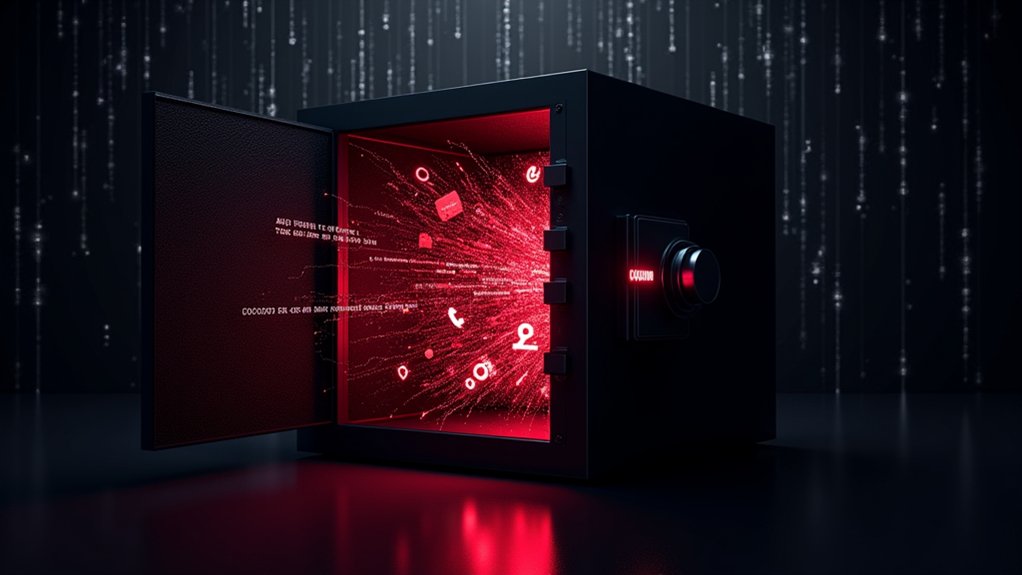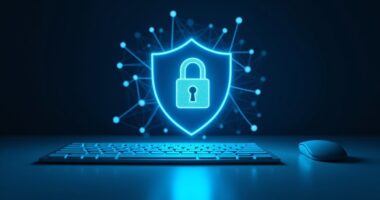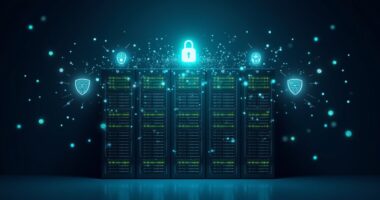Infostealer malware is the digital equivalent of a pickpocket – just nastier and more expensive. These sneaky programs silently harvest sensitive data like passwords, banking details, and personal information, costing companies an average of $4.45 million per breach. Popular variants like Zeus and RedLine spread through phishing emails and fake downloads, recording keystrokes and stealing clipboard data. The stolen information ends up sold to the highest bidder on dark web markets, where one person’s private data becomes another criminal’s payday. The rabbit hole of cybercrime goes deeper than most realize.

While cybercriminals have countless tools in their arsenal, infostealer malware stands out as particularly nasty. This sneaky software does exactly what its name suggests – it steals information. And not just any information. We’re talking about the really sensitive stuff: banking details, passwords, personal data, and anything else worth snatching from unsuspecting victims. The recent surge in data breaches has led to an average cost of 4.45 million dollars per incident. The worst part? It often operates silently in the background, like a digital pickpocket you never see coming.
The heavy hitters in the infostealer world read like a who’s who of digital criminals. Zeus targets your financial info. Ursnif sneaks around banking systems. Agent Tesla watches every keystroke you make (creepy, right?). LokiBot doesn’t discriminate – it’ll steal credentials from pretty much any platform. And RedLine? It’s basically malware available for rent, because apparently even cybercriminals believe in the sharing economy. Cybercriminals frequently distribute these threats through purported cracked software downloads.
These digital thieves don’t just appear out of nowhere. They slip into systems through phishing emails, compromised websites, fake software downloads, and good old-fashioned trickery. Once inside, they’re like nosy houseguests who won’t leave – except these guests are recording everything you type, grabbing form data, hijacking your clipboard, and taking screenshots of your sensitive information. Regular system monitoring can help detect suspicious network behavior that indicates an infection. Implementing robust security measures is essential for protecting against these sophisticated threats.
Infostealers are unwanted digital guests, sneaking in through security gaps and never leaving – all while secretly raiding your personal data vault.
The stolen data ends up exactly where you’d expect – sold on dark web marketplaces to the highest bidder. It’s a whole ecosystem of cyber theft, with criminals trading everything from credit card numbers to cryptocurrency wallet keys.
And here’s the kicker – this stolen information often enables even more attacks, creating a vicious cycle of cybercrime.
The malware-as-a-service model means these tools are more accessible than ever. Anyone with enough cryptocurrency and bad intentions can rent these digital burglary tools. It’s like a twisted subscription service for cybercrime, complete with customer support and regular updates.
Welcome to the dark side of technology, where your data is the product, and everyone’s a potential target.
Frequently Asked Questions
How Can I Check if My Computer Is Already Infected With Infostealer Malware?
Checking for infostealer infections requires a multi-pronged approach.
Start by monitoring Task Manager – those sneaky processes love to hide in plain sight.
Run reliable antivirus scans, they’re basically digital bloodhounds.
Look for weird browser extensions (they multiply like rabbits) and suspicious network connections.
Don’t forget to check system logs for shady activity.
High CPU usage from unknown processes? Yeah, that’s a red flag.
What Recovery Options Exist After an Infostealer Has Stolen My Data?
When data gets stolen, recovery means taking swift action. Immediate steps include changing all passwords, enabling multi-factor authentication, and freezing financial accounts.
Technical recovery requires malware removal, system reinstallation, and data restoration from clean backups.
Identity protection’s essential – fraud alerts, credit freezes, and monitoring services help limit damage.
Long-term, implementing security tools like password managers and VPNs can prevent future incidents.
The damage is done, but recovery’s possible.
Are Mac Computers Less Vulnerable to Infostealer Attacks Than Windows?
Historically, Macs were safer from infostealers. Not anymore.
While Windows machines still face more attacks overall, Mac infostealers are surging – up 101% in late 2024 alone.
Modern threats like Atomic Stealer and Poseidon are specifically targeting Apple’s ecosystem. Both systems have their weak spots.
Macs have solid built-in security, but cybercriminals are getting craftier at bypassing it. The gap in vulnerability is definitely shrinking.
Can Infostealers Bypass Two-Factor Authentication Security Measures?
Yes, infostealers can definitely bypass two-factor authentication (2FA).
These sneaky programs use multiple techniques to get around what’s supposed to be an extra layer of security. They steal session cookies, capture 2FA codes through keylogging, and exploit vulnerable password reset processes.
Some even use clever phishing schemes to trick users into handing over their 2FA codes. SIM swapping attacks are another way they intercept those “secure” verification codes.
No system is foolproof.
Which Antivirus Software Is Most Effective Against Modern Infostealer Variants?
Third-party solutions like Norton, ESET, and Bitdefender consistently outperform Windows Defender against modern infostealers.
Norton’s reputation-based scanning nailed 100% detection rates – pretty impressive. While Defender caught 78% in tests (not terrible for free software), it’s playing catch-up.
The real winners combine AI-powered behavioral detection with traditional scanning. Paid options pack extra features too.
But hey, any antivirus is better than none.
References
- https://flare.io/learn/resources/blog/infostealer-malware/
- https://www.cybermindr.com/blog/infostealer-malware-101-a-comprehensive-guide/
- https://spycloud.com/blog/how-to-address-the-infostealer-malware-threat/
- https://www.packetlabs.net/posts/what-is-infostealer-malware-and-how-does-it-work/
- https://www.reliaquest.com/blog/common-infostealers/
- https://www.infosecurityeurope.com/en-gb/blog/threat-vectors/guide-infostealer-malware.html
- https://en.wikipedia.org/wiki/Infostealer
- https://proton.me/blog/infostealers
- https://www.malwarebytes.com/blog/threats/info-stealers
- https://www.magnetforensics.com/blog/infostealer-malware-what-is-it-and-how-to-investigate/









